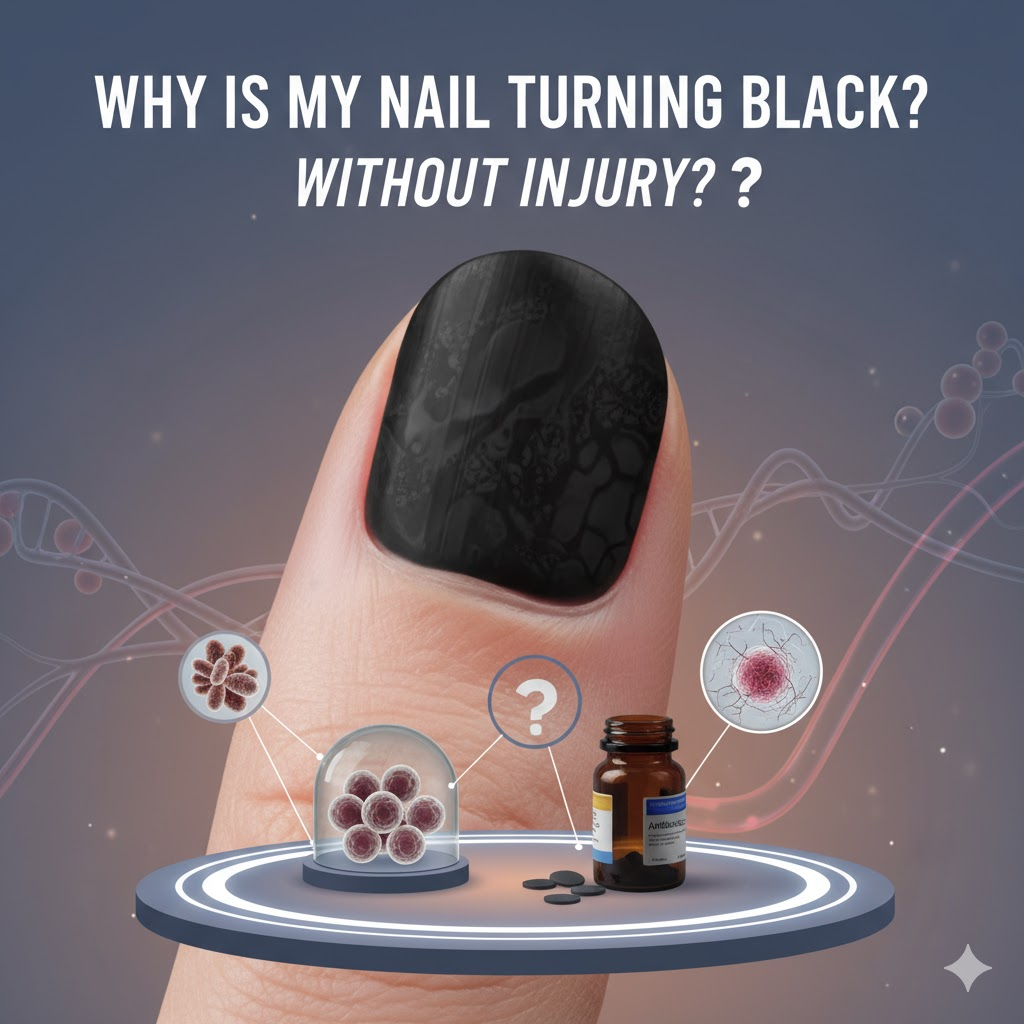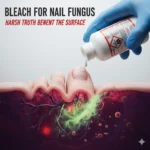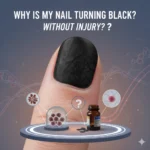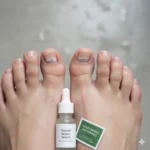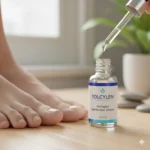nail turning black without injury You wake up one morning. You glance down. There it is your nail. Dark. Faded. A weird shade of black creeping from one corner.
You didn’t drop anything on it. Didn’t stub it. Didn’t slam it against a wall. So what happened?
That tiny moment of panic hits. Is it fungus? Blood? Cancer? Or something else entire?
Let’s talk about it. Slow. Honest. Like two people trying to figure out what the body’s trying to say.nail turning black without injury
The Strange Story Nails Tell
Your nails are small storytellers. Every ridge, every line, every color change—like a note left behind by your body. A black nail, though. That’s different. That’s the kind of story that gets your attention.
Sometimes, it’s harmless. Sometimes, it’s a warning.
Doctors call it melanonychia when nails turn dark—especially without trauma. Big word. Scary sound. But not always dangerous.
Still, here’s the thing. Black discoloration means pigment. And pigment means something changed where your nail grows deep under the skin.
It’s like the factory went off script.
When There’s No Injury So Why Black?
If you’re sure you didn’t hurt the nail, you start looking for hidden reasons. Internal ones. Silent ones.
1. Fungal Infection That Went Deep
Not the flaky white stuff people imagine. Sometimes fungus digs deeper. It hides under the nail plate, feeds on keratin, and turns the base darker. Almost dirty-looking. Like something trapped under glass.
You’ll see the nail thicken. Lift. smell bad. The black isn’t blood—it’s debris, fungus waste, and dying tissue. Gross, but true.
2. Melanonychia (Pigment From Melanin Cells)
Your body has cells that make melanin—the same stuff that gives your skin its color. Sometimes, they overwork. Even without trauma.
Dark stripes or full black patches show up. Fingernails, toenails—it doesn’t matter. This happens more in people with darker skin tones. It can be total normal. But here’s the twist. It can also mean something serious, like melanoma.
Doctors at Cleveland Clinic say if a black line shows up, gets bigger, or looks different, you should see a doctor. Fast.
3. Underlying Health Issues (The Silent Ones)
Sometimes, your nail’s not the problem. Your blood is. Your organs are.
Some sicknesses, like liver or kidney problems, can make color appear under your nails. Certain medications too antimalarials, chemotherapy, antibiotics. Even smoking stains nails blackish over time.
It’s your body whispering, “Hey, something’s off inside.”
4. Bacterial Infection (Pseudomonas)
There’s this little green-loving bacteria—Pseudomonas aeruginosa. It loves moisture. It loves nails. Especially fake nails or acrylics.
It seeps in. Stains the nail bed dark green or black. People think it’s dirt. It’s not. It’s bacterial pigment.
Remove the fake nail, and sometimes the color fades. Sometimes it needs antibiotics.
5. Melanoma (Yes, the Scary One)
And here’s where you hold your breath.
Subungual melanoma. Skin cancer—but under the nail.
It starts as a black or brown streak, usually vertical. It may look like fungus at first. Then it grows. Spreads. Pushes the nail up.
Doctors warn—it’s sneaky. Pain doesn’t always come first.
If the color moves to your skin or one nail looks very different, see a skin doctor now. Not next week. Now.
The Doctor’s View (What They Look For)
When you go in, your doctor doesn’t glance and guess. They look for patterns. Uniform color or patchy? Smooth or ridged? One nail or many?
They might order:
-
Dermoscopy – a magnified look at pigment.
-
Biopsy – a tiny sample from under the nail.
-
Culture test – checks for bacteria or fungus.
Doctors at Mayo Clinic say diagnosis matters more than speed. Because treating the wrong cause can make it worse.
Antifungal cream won’t fix melanoma. Antibiotics won’t stop pigment overgrowth.
What It’s Not
Let’s clear up some myths.
-
It’s not always fungus.
-
It’s not always trauma.
-
It’s not always dirt.
-
And no, it’s not your polish staining it forever.
Sometimes, it’s hormonal changes. Pregnancy. Thyroid issues. Aging. Your nails mirror your health in weird, unexpected ways.
A Real Story (Because This Happens)
A woman once posted her story online. She noticed a black streak on her thumb nail. Small. Harmless-looking. She thought it was polish residue.
Months later, it grew wider. Her doctor ran tests—it was melanoma. Early stage. She got it treated. Saved her finger.
If she had waited, it could’ve spread fast.
That’s why even the smallest black mark shouldn’t be ignore.
What To Do When You Notice It
Here’s your simple, no-fluff guide:
1 Stop guessing. Don’t Google images for hours. Nails lie. Photos deceive.
2. See a podiatrist or dermatologist. Not your family doctor. Nail discoloration is a niche specialty.
3. Take notes. When did it start? Has it changed color? Does it hurt? Is it one nail? Doctors love timelines. They help.
4. Avoid self-treatment. No bleach scraping essential oils, please.
5. Let the diagnosis guide you. If it’s fungus, treat it.it’s pigment, check it. If it’s cancer, act immediately.
Home Care While You Wait
You can’t fix everything at home. But you can protect what’s left.
-
Keep nails dry and clean.
-
Skip harsh nail polish for a while.
-
Wear breathable shoes.
-
Moisturize cuticles.
-
Don’t bite or pick.
If it’s bacterial, sunlight sometimes helps (Pseudomonas hates UV). If it’s fungal, your doctor might add antifungal lacquer.
Can It Go Away On Its Own?
Sometimes yes. If it’s from mild trauma you didn’t notice a small shoe rub—the black area grows out slow. But if it stays, darkens, or spreads? No. That’s your sign.
Nails take months to renew. Toenails especially slow. So patience helps—but ignoring doesn’t.
The Psychology of Nail Fear
People rarely talk about this, but seeing your nail turn black messes with your head. It’s small, but it’s you. And it feels like your body’s betraying you.
Doctors say this reaction’s common. Because visible health issues hit different. It’s not hidden inside. It’s right there, staring back.
That’s why awareness matters more than panic. Black nail ≠ doom. Black nail = check it out.
When to Worry nail turning black without injury
Worry if:
-
One nail looks different.
-
The black streak widens or changes.
-
You see pigment on skin around nail.
-
You have a history of skin cancer.
Relax (a bit) if:
-
It’s on several nails equall.
-
You recently started new medication.
-
You have darker skin and it’s always been there.
Still—get confirmation. Always.
How Doctors Treat It (Depending on Cause)
CauseTreatmentWhat to ExpectFungal InfectionOral/topical antifungalsNail may take months to clearBacterial InfectionAntibiotics, nail cleaningColor fades in weeksMelanonychiaMonitoring or biopsyDepends on growth patternMelanomaSurgical removal, oncology careUrgent, seriousMedication ReactionAdjust prescriptionNail clears after a few months
Every case tells a story. Doctors at the University Foot & Ankle Institute say, “Your nails can warn you before you feel sick.
Can You Prevent It?
Most, yes. Wear breathable shoes. Trim carefull. Don’t dig under your nails. Switch nail salons if hygiene seems off. Don’t share clippers. Avoid harsh chemicals.
If you’re diabetic, check your nails weekly. Black spots can signal circulation issues too.
The Bottom Line nail turning black without injury
A black nail without injury isn’t random. It’s a clue. Sometimes it’s minor. Sometimes it’s the first whisper of something deeper.
Listen to it.
Your nails aren’t decoration. They’re health indicators. They’ve been talking this whole time—you needed to notice.
Frequently Questions nail turning black without injury
1. Can stress make my nails turn black?
Not direct. But stress makes your body weak and slows blood flow, so nail color changes can happen.
2. Is black nail always melanoma?
No. But if it’s new, changing, or on one nail only—get it checked fast.
3. Can nail polish cause black nails?
Dark nail polish can stain your nails, but a black color under the nail usually means you’re not healthy.
4. What doctor should I see?
Start with a dermatologist or podiatrist. They deal with nail health and underlying causes.
5. Can fungus make nails black? Yes. Deep fungal infections can darken the nail plate.
6. How long does it take for black nails to grow out?
Usually 6–12 months for toenails, 3–6 months for fingernails.
7. Should I cover it with nail polish?
Not until you know what it is. Covering can hide changes that doctors need to see.
8. Can vitamins fix nail discoloration?
Only if the cause is nutritional deficiency, like lack of B12 or iron.
9. What if it doesn’t hurt?
Pain isn’t always a sign of danger. Melanoma and pigment disorders can be painless.
10. Can acrylic or gel nails cause black spots?
Yes, especially if they trap moisture and lead to bacterial or fungal growth.

